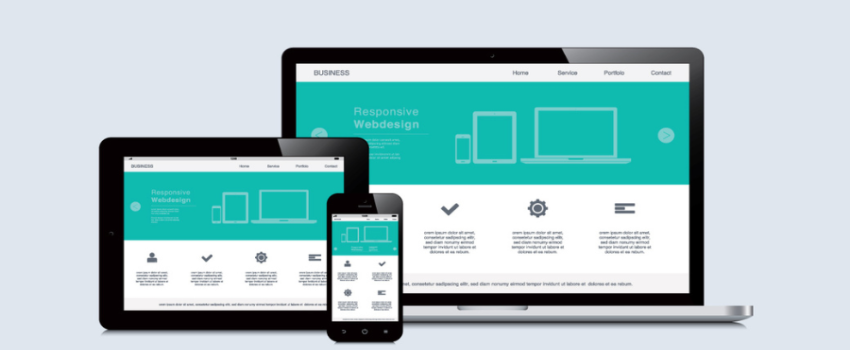Beginner’s Guide to Mobile Responsive Website and Why It Is Important?
Navigate to

In the digital age, where smartphones have become an integral part of our lives, ensuring an optimal user experience across various devices has become paramount. One of the key terms in this context is "mobile responsive website." As the world of technology advances, businesses are adapting to the changing landscape by venturing into various avenues such as Android application development, mobile app makers, and app-making companies. In this article, we will delve into the concept of a mobile responsive website and its significance in the contemporary digital ecosystem.
What is a Mobile Responsive Website?
A mobile responsive website is a design approach that ensures a seamless and visually appealing experience for users across a spectrum of devices, including desktops, tablets, and smartphones. Unlike traditional static websites, which may appear distorted or require zooming in when accessed on mobile devices, responsive websites automatically adjust their layout, images, and content to fit the screen size and orientation of the device being used.
In the realm of Android application development and mobile app creation, a mobile responsive website serves as the backbone for a consistent user experience. It forms the foundation upon which an app maker or an app-making company can build a mobile app that resonates with their target audience.
Why is Mobile Responsiveness Important?
Let's dive into the importance of Mobile Responsive website design,
- Enhanced User Experience: With the increasing diversity of devices and screen sizes, delivering a seamless user experience has become a challenge. A mobile responsive website addresses this challenge by optimizing content for different screens, thereby reducing the need for users to pan, zoom, or scroll excessively. This, in turn, leads to higher user satisfaction and longer engagement.
- Improved SEO Ranking: Search engines like Google consider mobile responsiveness as a ranking factor. Websites that are mobile-friendly tend to rank higher in search results, driving organic traffic and potential customers. This aspect is crucial for both businesses venturing into Android application development and those seeking to create a strong online presence.
- Cost-Effectiveness: In the context of app-making companies and mobile app makers, investing in a mobile-responsive website can offer cost savings. Rather than developing separate websites for different devices, a responsive design streamlines the development process and reduces maintenance efforts.
- Broader Audience Reach: Mobile devices have become the primary medium for internet usage for a significant portion of the global population. A mobile responsive website ensures that your content reaches a wider audience, regardless of the device they are using, potentially leading to increased brand visibility and customer engagement.
Key Components of a Mobile Responsive Website
- Flexible Layout: The layout of a responsive website adapts to different screen sizes. Elements like images, text, and navigation menus are rearranged and resized to ensure a coherent and visually appealing presentation.
- Fluid Grids: Responsive websites use fluid grids, which are based on relative units like percentages rather than fixed units like pixels. This allows content to resize and reposition itself in a way that maintains proportions across different screens.
- Media Queries: Media queries are CSS rules that allow you to apply styles based on the characteristics of the device, such as screen width, resolution, and orientation. This enables tailored styling for different devices.
- Flexible Images: Images within a responsive website are optimized to scale appropriately to fit different screens. This prevents images from appearing too large or too small on various devices.
- Touch-Friendly Navigation: In the context of Android application development and mobile app creation, touch-friendly navigation elements are essential for a seamless user experience on mobile devices. Responsive websites incorporate navigation that is easy to use with touch gestures.
Integrating Mobile Responsive Design with App Development
For those delving into the world of mobile app development, the principles of mobile responsive design go hand in hand with creating a successful mobile application. A mobile responsive website can serve as a prototype for the app's user interface and layout. This ensures that the app maintains consistency with the brand's online presence and provides a familiar experience to users who have interacted with the website.
Mobile responsive design, a cornerstone of modern web development, ensures a seamless user experience across various devices and screen sizes. When seamlessly integrated with app development, it brings forth a multitude of advantages:
- Consistency in Brand Identity: For an app-making company or a mobile app maker, maintaining a consistent brand identity is paramount. By harmonizing the design elements of a mobile responsive website with an app's interface, users encounter a familiar and coherent visual experience. This fosters a sense of trust and recognition.
- Streamlined User Experience: Integrating responsive design principles allows Android application development to yield apps that cater to a diverse user base. The intuitive and adaptable layout ensures that the app functions optimally across smartphones, tablets, and other devices. Users can transition seamlessly between the website and the app, enhancing engagement.
- Efficient Development Process: Replicating the design principles from a mobile responsive website can accelerate the app development process. Elements such as flexible grids, touch-friendly navigation, and media queries can be carried over, reducing the time and effort required to conceptualize and execute app interfaces.
- Cost-Effective Solution: For businesses aiming to build a mobile app, integrating mobile responsive design components can be cost-effective. The initial investment made in crafting a responsive website can serve as a blueprint for app development, minimizing the need for redesigning and reengineering.
- Adaptability to New Devices: In a rapidly evolving technological landscape, new devices with varying screen sizes and orientations constantly emerge. A mobile responsive approach ensures that your app remains adaptable to these new devices, future-proofing your investment in Android application development.
Conclusion: Combining mobile responsive design with app development is a strategic choice yielding many benefits. This synergy enhances brand identity, boosts user engagement, and optimizes resources. Whether you're involved in Android application development or part of a mobile app development company in Bangalore, this approach empowers you to deliver a seamless user experience that transcends device boundaries, placing you at the forefront of the digital landscape.










